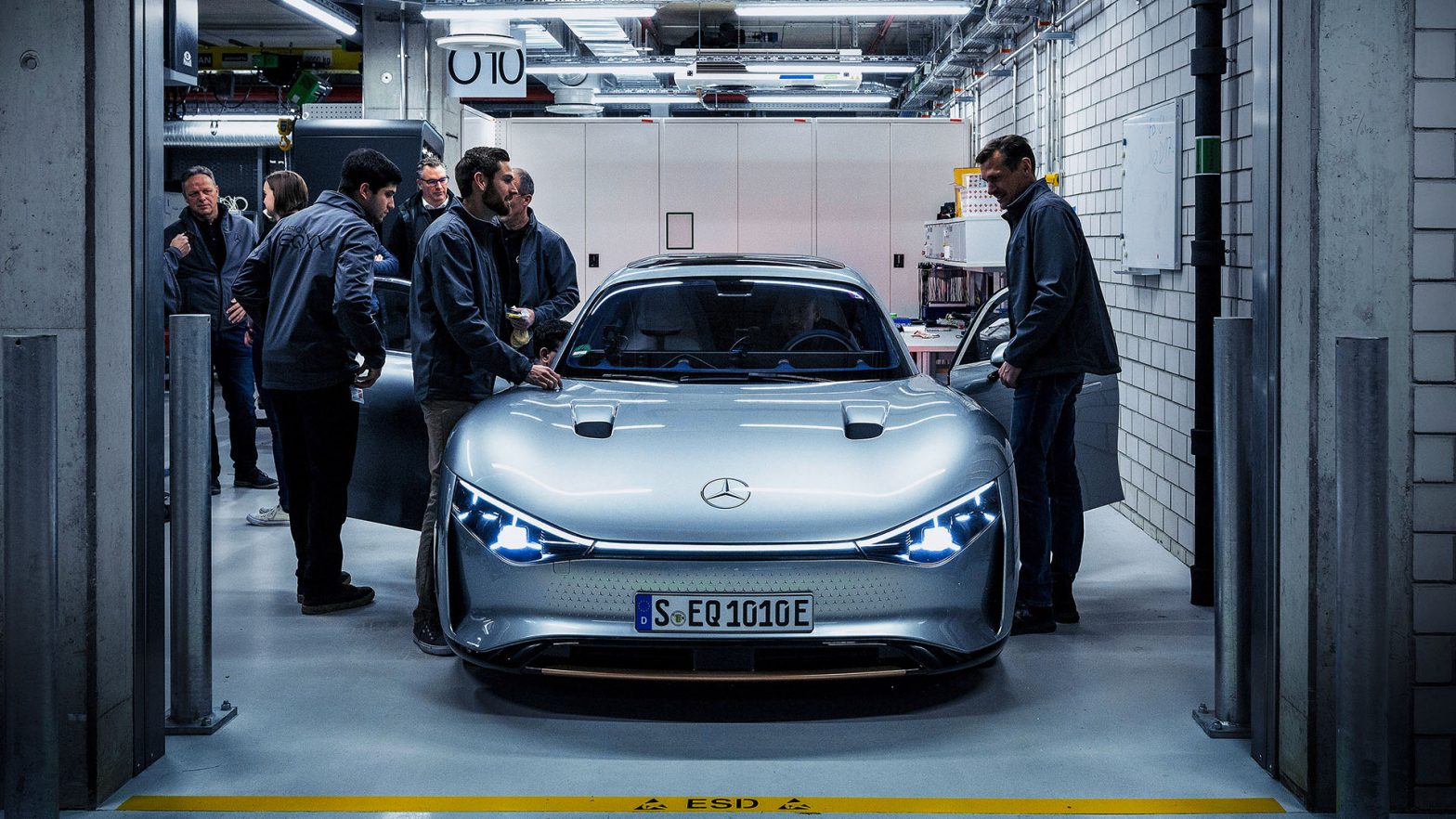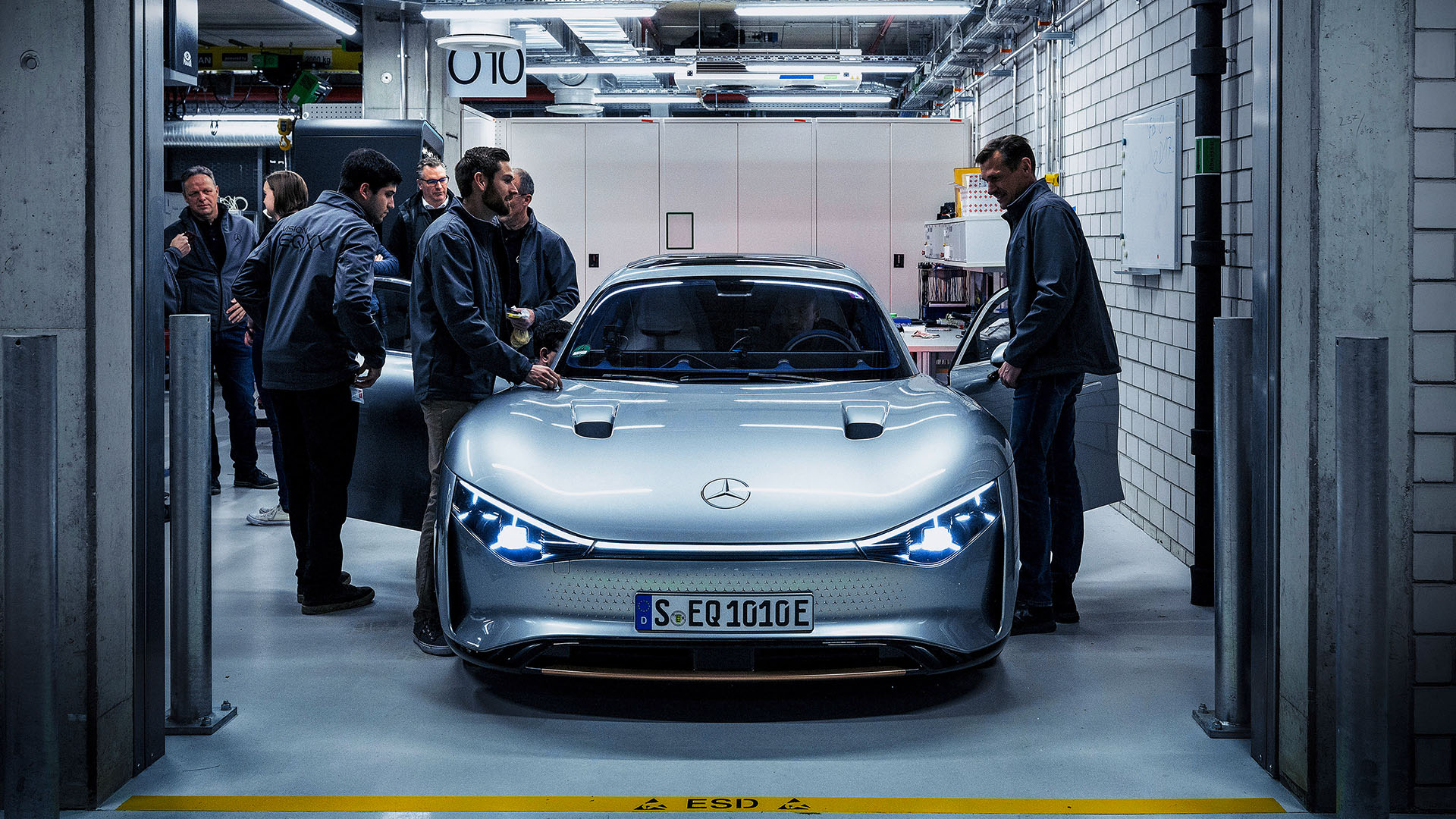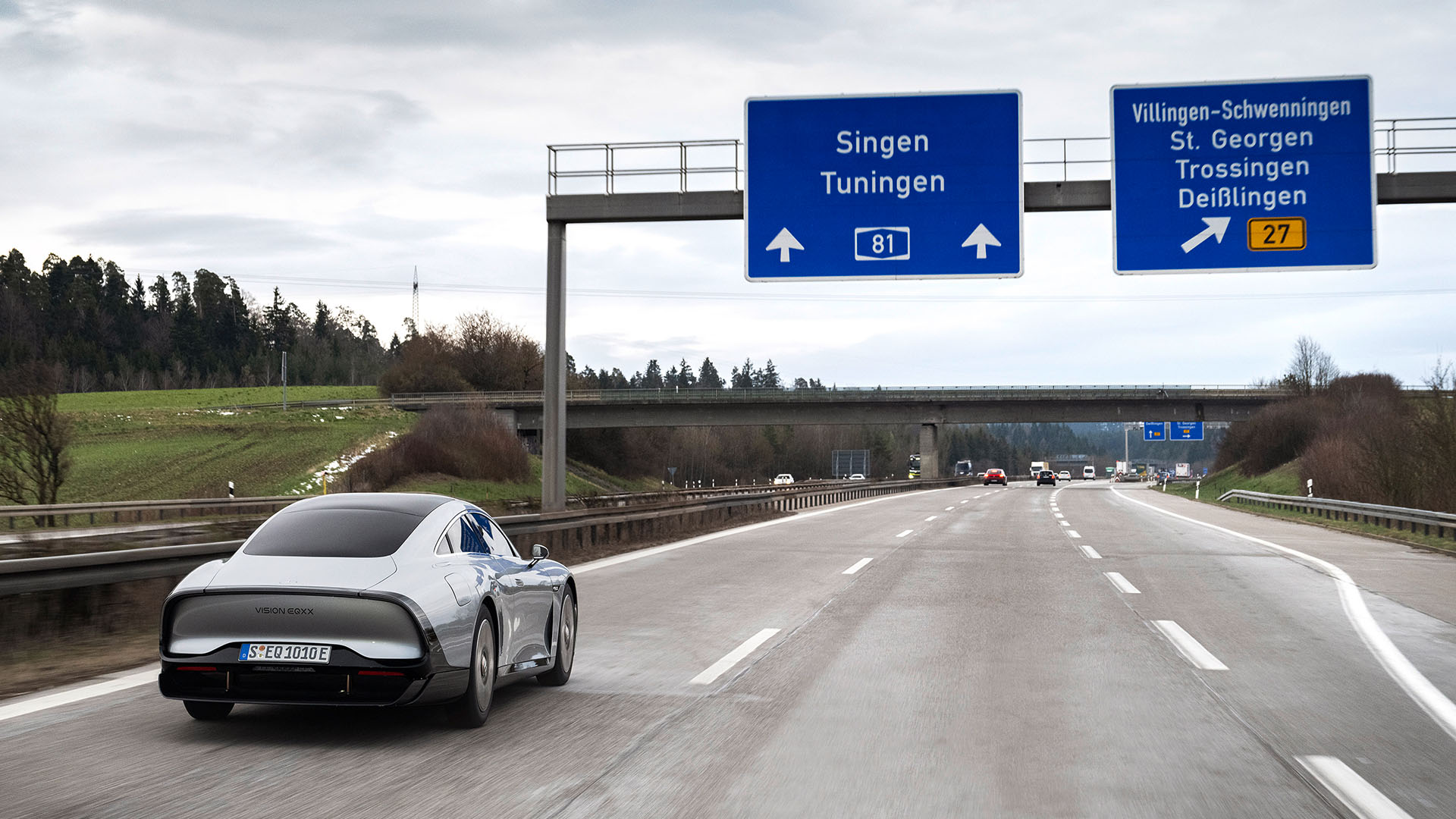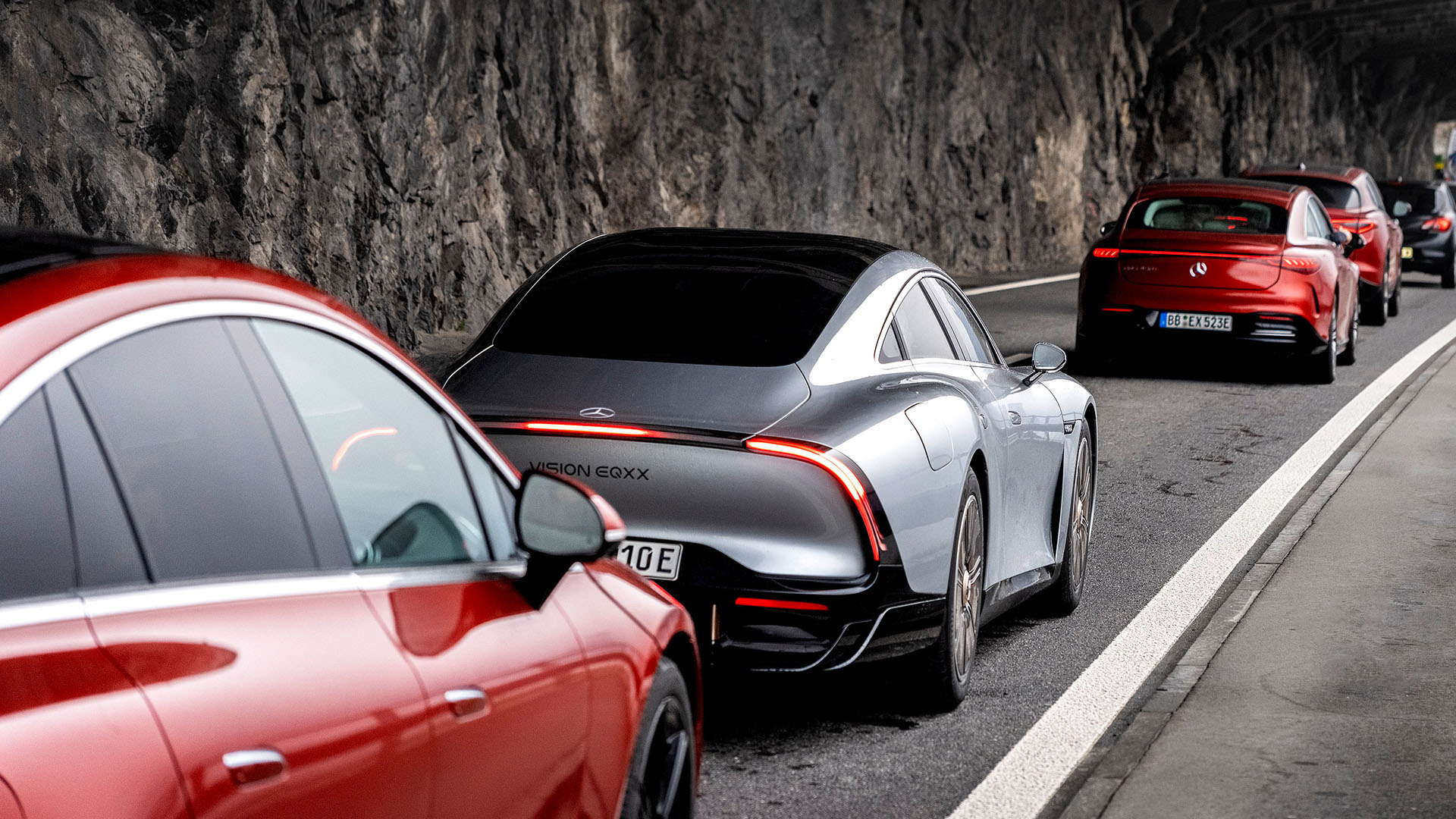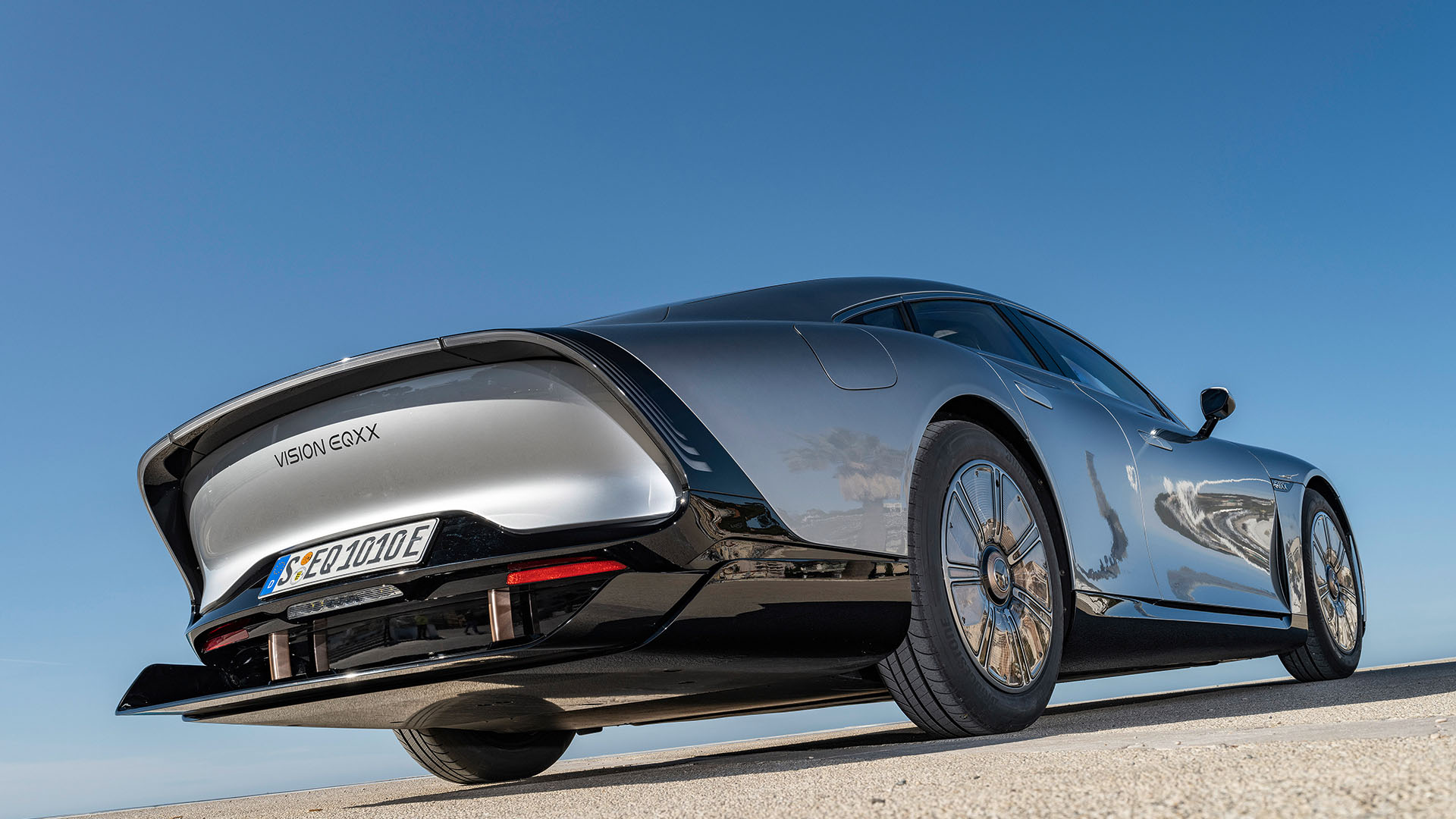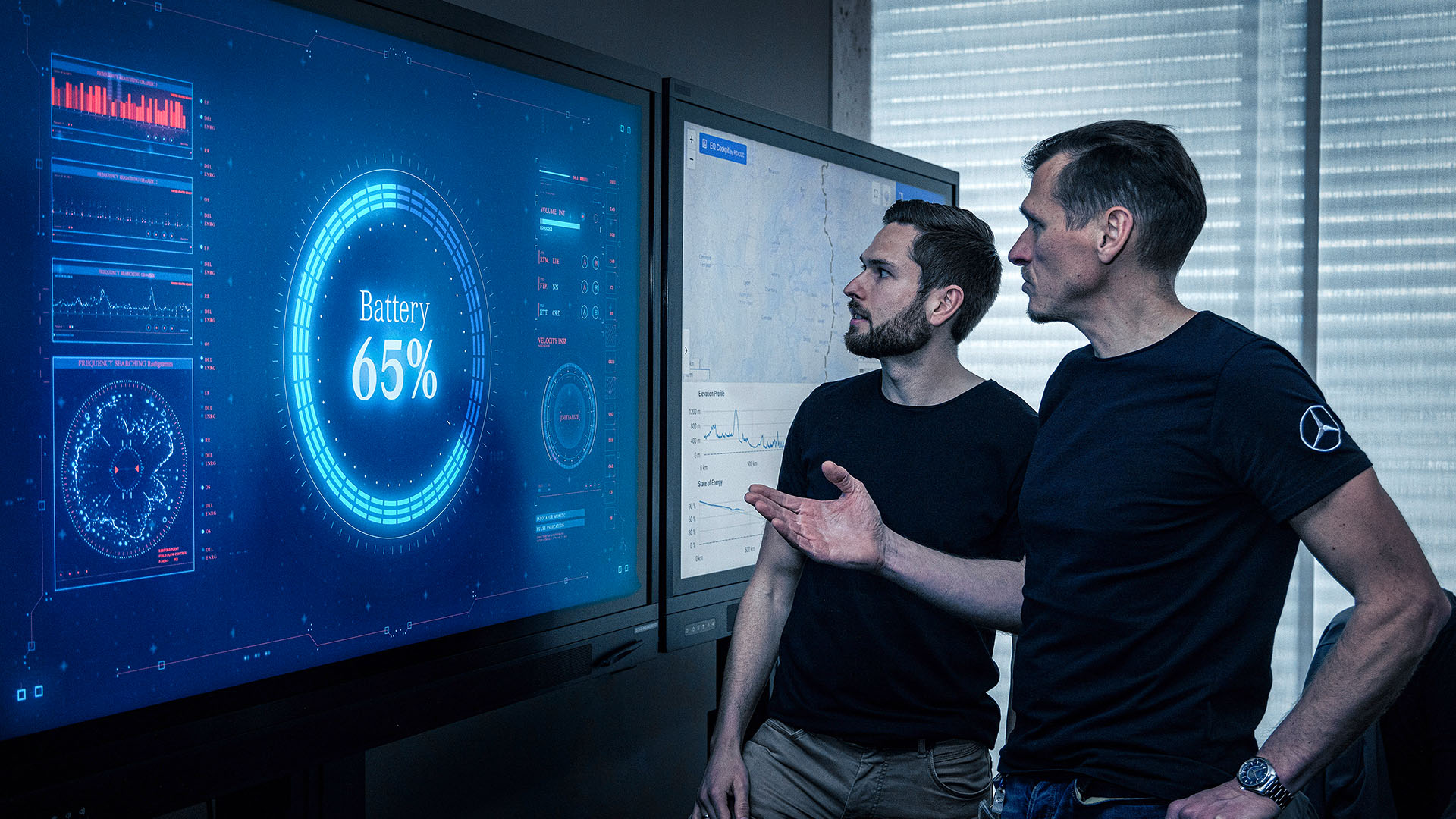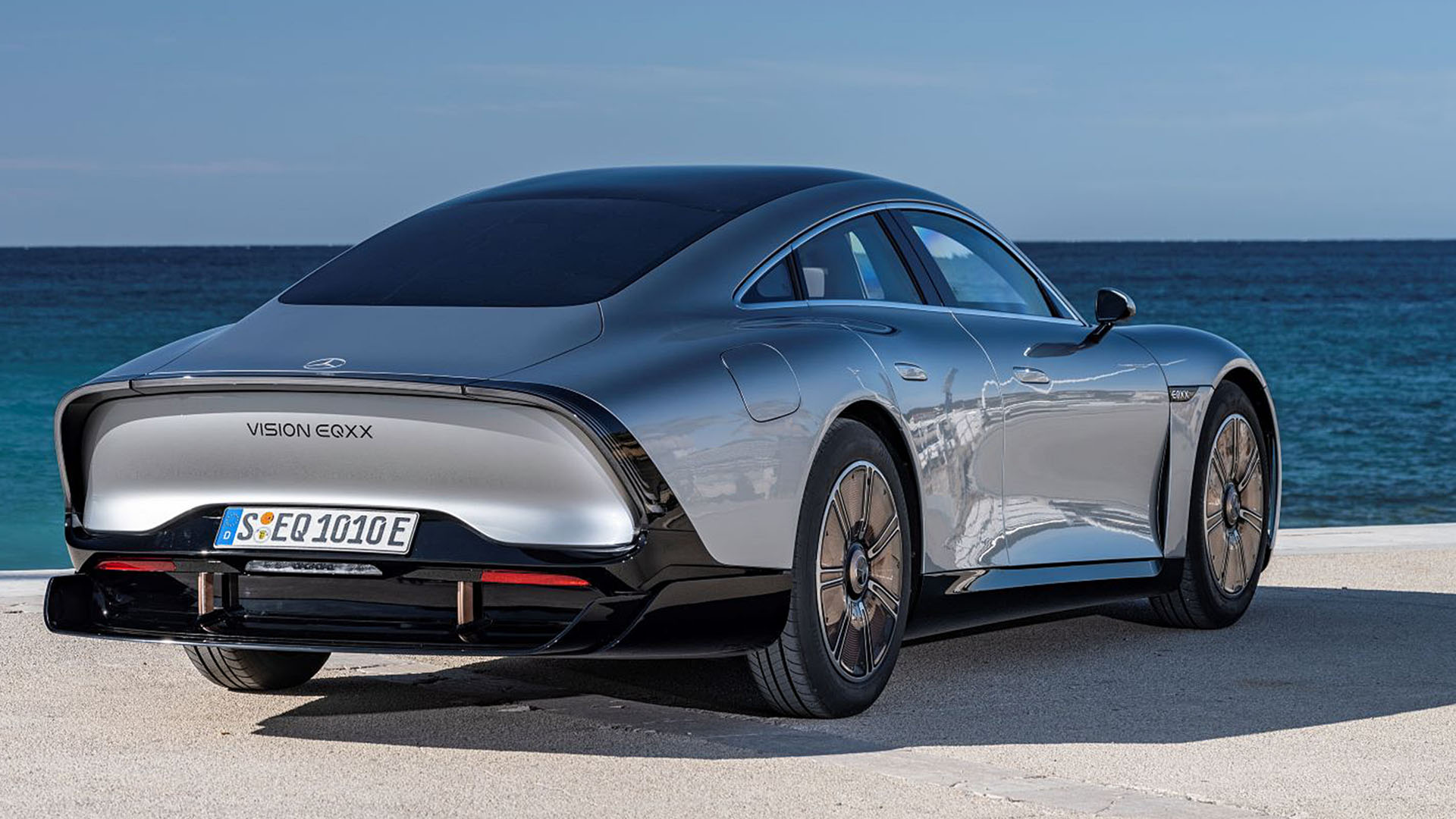The one thing that most people are afraid of today when thinking about buying an EV is the range, and while the total number of miles you can travel in today’s all-electric sedans isn’t too bad, and most of them can be charged up to 80% in less than 30 minutes, the latest Mercedes VISION EQXX shows the world that a 1,000 km (621 miles) range on just one charge is just around the corner, and not just on a test bench but in real-life driving as the Mercedes engineers took their prototype onto public roads from Sindelfingen across the Swiss Alps and Northern Italy, to its destination of Cassis on the Côte d’Azur.
This was some real-world testing, starting the journey in rainy and cold conditions, and as you know, in Germany you can really speed up, but for this test, a speed of 140 km/h (87 mph) was maintained for prolonged sessions on the German Autobahn, while on other roads and outside of Germany the speed was kept just below the official speed limit, so they had the wipers on, probably the lights during periods of time, and still, this amazing prototype managed to arrive in Cassis with 15% of battery charge remaining, which converts into about 140 km of range left (87 miles), what even more impressive is the average power consumption of just 8.7 kWh per 100 km, which is about half of what today’s production EV’s manage.
“We did it! Powering through more than 1,000 kilometers with ease on a single battery charge and a consumption of only 8.7 kWh/100 km in real-world traffic conditions. The VISION EQXX is the most efficient Mercedes ever built. The technology program behind it marks a milestone in the development of electric vehicles. It underpins our strategic aim to ‘Lead in Electric’,” says Ola Källenius, Chairman of the Board of Management of Mercedes-Benz Group AG.
The future of battery-powered EV cars isn’t just in creating more powerful battery pack and fast charging points, it’s also about making sure the car itself is designed with an approach of efficiency, making the EV as light as possible, even considering the heavy weight of current batteries, but also work on aerodynamic resistance of the car, and getting the actual power consumption down to a level that you can guarantee a large range without reverting to larger batteries, and that is exactly what the designers at Mercedes managed to accomplish with this new VISION EQXX prototype.
“With our successful road trip to the South of France, we’ve shown that efficiency is the new currency. And this success also clearly speaks for our new collaborative development process, incorporating many learnings from the Mercedes-AMG F1 team and its cutting-edge expertise in electric powertrains. The VISION EQXX is the result of a comprehensive program that provides a blueprint for the future of automotive engineering. Many of the innovative developments are already being integrated into production, some of them in the next generation of modular architecture for compact and midsize Mercedes-Benz vehicles. And the journey continues. With the VISION EQXX, we will keep testing the limits of what’s possible,” says Markus Schäfer, Member of the Board of Management of Mercedes-Benz Group AG, Chief Technology Officer responsible for Development and Purchasing.
During this one-day road trip, the VISION EQXX crossed several European borders, from Germany into Switzerland, then onto Italy where they went past Milan to finally arrive in Cassis, a port near Marseille in the South of France, they deliberately took this route to make sure the prototype would encounter varying conditions along the way, to really mimic an actual trip a client would make in this EV, driving on the highway, but also over mountain passes and even getting stuck in traffic around roadworks, and it’s not just about the road, when they departed in Germany it was cold, but in the South of France it got a lot warmer, in fact, they saw temperatures from 3 to 18 degrees Celcius.
The Mercedes VISION EQXX has a Cd of just 0.17, which keeps the wind while driving from slowing her down too much, this allows speeds of 140 km/h with ease during the first section of this road trip, the design of this prototype was made narrower at the rear, by as much as 50 mm, with a reduced track width for the rear wheels, this means the front wheels actually create a slipstream for the rear ones to work in, and an adjustable rear diffuser deploys itself at 60 km/h to reduce drag even further, naturally the bespoke Bridgestone tires also help, and while these are a large 20-inch in diameter, they are only 185mm wide, these tires have a 20% less roll resistance.
When heading to the famous Gotthard Tunnel to go to Italy, the relatively low overall weight of the VISION EQXX at 1,755 kgs comes in handy to lower power consumption when going up a 5 percent gradient for about 14 kilometers, this could really eat up energy fast, but thanks to the lightweight design, this was kept to an absolute minimum, this was achieved thanks to the sustainable carbon-fiber-sugar composite material used for the upper part of the battery, which is also used in Formula 1, and the BIONEQXXTM rear floor, manufactured using an aluminum casting process. The light metal structural component replaces a much heavier assembly of several interconnected parts. It has gaps in places where structural strength is not required, thus saving material. This innovative design approach results in a weight saving of up to 20 percent compared to a conventionally manufactured component.
The battery fitted to the VISION EQXX is also a 100 kWh unit, similar to the Mercedes EQS which is being built for customers as we speak, but compared to this production model, the VISION EQXX battery is 50% smaller and 30% lighter, and every single kilogram of weight that can be reduced is extremely important in an EV, the very compact battery in this prototype measures just 200 x 126 x 11 cm and comes in at just 495 kilograms, small enough to be fit into a compact car.
Driving an EV is all about recuperation, we already know that braking can charge the batteries, but the same can be done by going downhill, and once you’ve left the Gotthard Tunnel behind you on the way to Italy, you get on a very long, downhill stretch of road, and thanks to the VISION EQXX highly efficient electric powertrain, the regeneration of energy is impressive, and while going downhill you even recover during braking, and in this case, the car uses electric braking instead of the mechanical brakes, which also results in the use of aluminum brakes that shave even more weight off compared to steel ones.
And the VISION EQXX has another trick up her sleeve to make the most of her battery reserves, the roof is fitted with a total of 117 solar cells that feed the 12-volt battery that is used for the auxiliaries systems in the car, like the navigation system, for instance, thus removing draw on the high-voltage EV battery, in the end, the engineers could calculate the use of the solar cells on the roof added another 2% to the overall range of this prototype, or about 25 km in the end.
Shortly before crossing the finish line in Cassis, the VISION EQXX gathered energy once more through recuperation. After 11 hours and 32 minutes of driving time, it ended its 1,008-kilometre road trip with a remaining range of around 140 kilometers. This means it could have set off again for a jaunt along the Mediterranean coastline without recharging.
